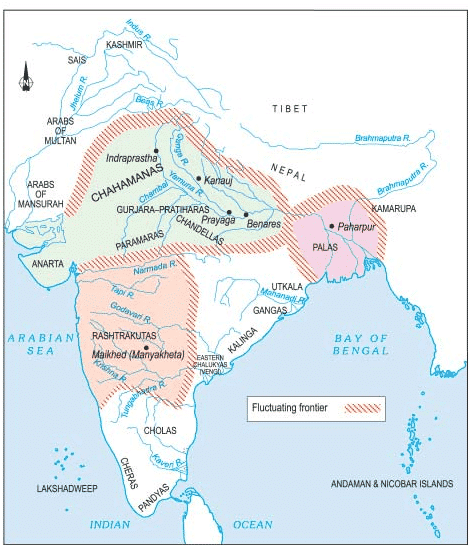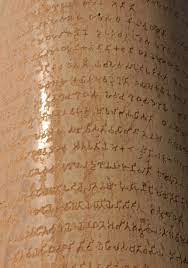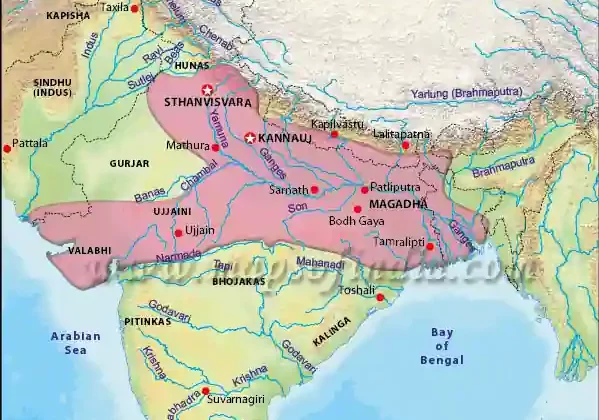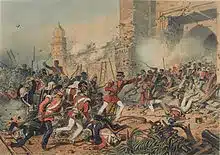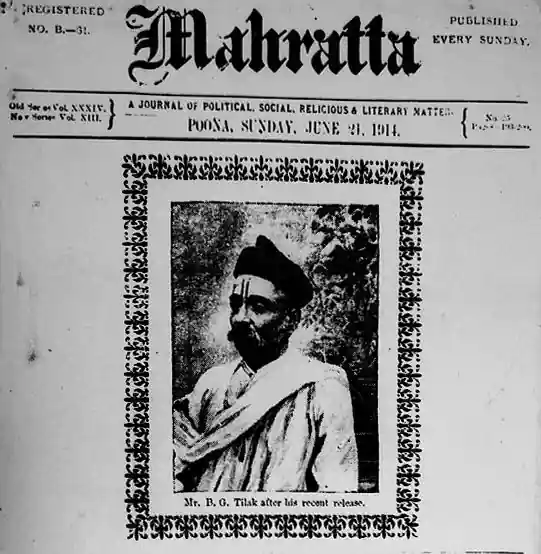Important Sites of Indus Valley Civilization
Harappa
- Harappa is the first discovered site of this civilization excavated in 1921 by a team led by Daya Ram Sahni.
- It was a major urban centre during its mature phase surrounded by extensive walls.
- It is located in Punjab Province, Pakistan, on an old bank / bed of the River Ravi.
- Its location along old course of Ravi provided access to trade networks, aquatic food and water for drinking and cultivation.
- Due to this, Harappa remained occupied for a long time. Further, Harappa was also a meeting point of trade routes coming from east.
- Archaeologists have divided Harappa in five different phases of which oldest is Ravi aspect / Hakra (3300-2800BC), followed by Kot Dijian or Early Harappa (2800-2600BC) followed by Mature (2600-1900BC), Transitional (1900-1800BC) and Late Harappa (1800-1300BC) phases.
- The important material findings at Harappa include pottery, chert blades, copper or bronze implements, terracotta figurines, seals and sealing, weights, etc. This apart, the two rows of granaries with brick platforms, a citadel on elevated platform, a supposed workmen’s quarter, vanity case, furnaces, crucibles for bronze smelting etc. have also been found.
- Harappa also is the only site which yields the evidence of coffin burial. A copper bullock cart is another notable finding.

Mohen-jo Daro
- Mohenjo-Daro (mound of dead) was excavated by a team led by R.D. Banerjee in 1922.
- It is located in the Larkana District of Sindh Pakistan on bank of Indus River.
- Important Findings of Mohen-Jo Daro
- Notable findings at Mohenjo-Daro are the Great Bath(There is use of Burnt bricks, Mortar and Gypsum in the Great bath but NO use of stone is there), uniform buildings and weights, hidden drains and other hallmarks of the civilization.
- This is the site where most unicorn seals have been found. Mohenjo-Daro is also sometimes known as largest urban centre of the civilization.
- The famous bronze dancing girl, seal of supposed Pashupati, steatite statue of bearded priest, numerous terracotta figurines are another notable findings of Mohenjo-Daro.
Kalibangan
- Kalibangan (black bangles) is in Hanumangarh district of Rajasthan.
- It was located on the banks of now dried up Sarwaswati River. The site was excavated by A Ghosh.
- Important Findings at Kalibangan
- The oldest ploughed field, evidence of earliest recorded Earthquake (which might have ended this city itself), Fire-Altars, Charging bull, tiled floor, two kinds of burials (circular and rectangular graves), bones of camels etc. are important findings of Kalibangan.
- Further, this site was different from Harappa and Mohenjo-Daro in the following respects:
- The bricks in other sites were baked ones, while Kalibangan bricks are earthen ones.
- There was no drainage system in Kalibangan.
- Due to these, Kalibangan is not considered a well planned city as comparable to other important sites of Indus Valley.
Dholovira
- Dholavira is located in Rann of Katch of Gujarat. It is relatively a new discovery, excavated in 1990s by a team led by R S Bisht.
- It had several large reservoirs, an elaborate system of drains to collect water from the city walls and house tops to fill these water tanks.
- Dholavira versus Harappa & MohenJo Daro
- Harappa, Mohenjo-Daro and Dholavira are called the nucleus cities of the civilization.
- Unlike the Harappa and Mohenjo-Daro where there are two settlements, in Dholavira 3 citadels or principal divisions have been found which have been duly protected by fortifications.
- There is an open ground out of the fortifications.
- In Dholavira there has been found the inner enclosure of the citadel too which has not been found in any other cities of the Harappan culture.
- Important Findings of Dholavira
- One of the most important findings of Dholavira has been a signboard with Indus Script.
Lothal
- Lothal is located in Ahmadabad, Gujarat.
- It was a coastal town {three important coastal towns of IVC are Lothal, Suktagendor and Balakot} and had different type of town planning.
- The city was divided into six sections and each section was built on a wide platform of unripe bricks.
- Entry to the houses were on Main Street while other sites of IVC have lateral entry.
- Important Findings of Lothal
- Important findings of Lothal include an artificial dockyard {which makes it an important sea link}, rice husk {rice husk has been found only at Lothal and Rangpur}, bead making factory etc.
- Lothal is thought to have direct sea trade links with Mesopotamia because of finding of an Iranian seal from there.
Suktagendor
- Suktagendor was located around 55 kms from the shore of Arabian Sea on the Bank of Dasht River near the Iran Border.
- It was an important coastal town along with Lothal and Balakot (in Pakistan) and is considered to be the western border of Indus Valley Civilization.
- It was originally a port and later cut off from the sea due to coastal upliftment.
- Suktagendor had trade relationships with Babylon.
Kot Diji
- Kot Diji was a pre-harappan site and located on the left bank of River Sindh.
- This city was destructed by Force or some fire.
- A tar is the major object found here.
- Statues of bull and mother goddess are other things found in Kot diji.
Ropar
- Ropar in Punjab was excavated under Y D Sharma.
- There is another site Bara near Ropar, which shows an evidence of the decaying culture of pre harappan era.
Chanhu-Daro
- Chanhu Daro is situated 130 kms south of Mohenjo-Daro in Sindh and is the only harappan city which does not have a fortified citadel.
- The Chanhu Daro has given evidence of factories of various figurines, seals, toys, bone implements so it has been interpreted that it was a settlement with lots of artisans and was an industrial town.
Banawali
- Banawali is located in Hissar district of Haryana. High quality barley has been found at Banawali.
Alamgirpur
- Alamgirpur is located in Meerut in Uttar Pradesh and is considered to be easternmost boundary of Indus Valley.
- Important findings of Alamgirpur include pottery, plant fossils, animal bones and copper tools.
Surkotda
- Surkotda is located in the Bhuj area of Gujarat and has provided evidence of the first actual remains of the horse bones.
Rangpur
- Rangpur is located 50 kms from Ahmadabad in Gujarat. This along with Lothal are two sites where rice husk has been found by archaeologists.
Rakhigarhi
- Rakhigarhi in Haryana is considered to be the largest site of Indus Valley Civilisation. Granary, cemetery, drains, terracotta bricks have been found here.
- It is called the provincial capital of Harappan Civilisation.
Summary
- Suktagendor, Lothal and Balakot were the coastal cities.
- Rice husk found at Lothal and Rangpur.
- Horse bones found at surkotda.
- Kot Diji and Amri were pre-harappan sites.
| Sites | River bank | Important facts |
| Harappa | Ravi | rows of granaries, Citadels, Furnaces and a crucible to melt the bronze. |
| Mohenjodaro | Indus | Great Bath, uniform buildings and weights, hidden drains and other hallmarks of the civilization |
| Lothal | Bhogava | 6 sections in city, Artificial dockyard, Entry from the main street instead of lateral entry that was common, The vase depicting a thirsty crow, Rice husk, coastal city and port town. |
| Kalibangan | Ghaggar | Ploughed Field, Bones of Camel, Circular and Rectangular Graves, Neither Baked Bricks nor a Drainage system. |
| Chanhudaro | Indus | only city in the Indus Valley civilization which does not have a citadel |
| Dholavira | Luni | Signboard, 3 citadels with improved inner enclosure |
| Sutkagendor | Dasht | Coastal Cities and Port Towns |
Also refer:


